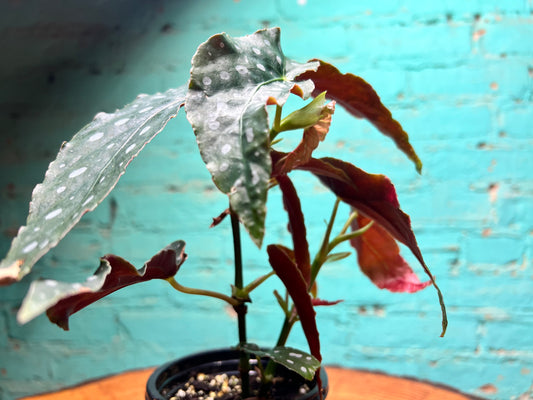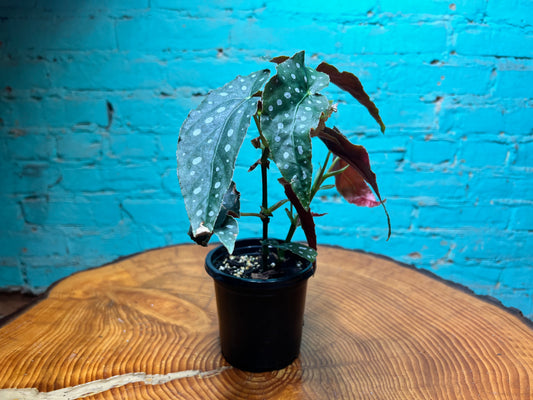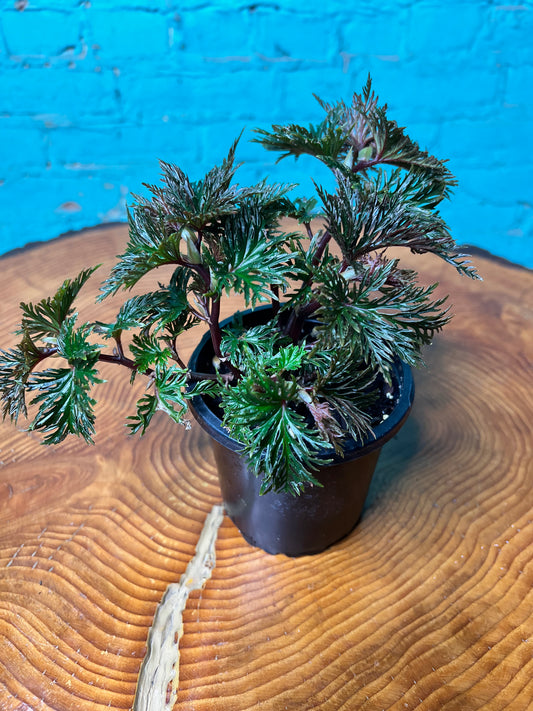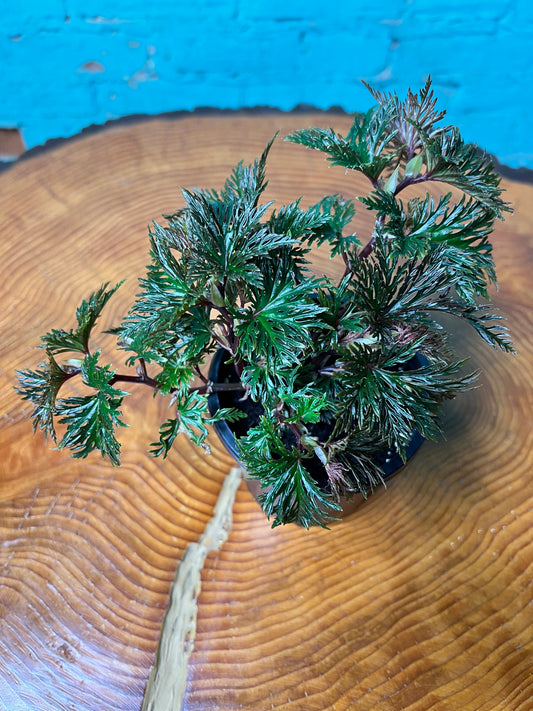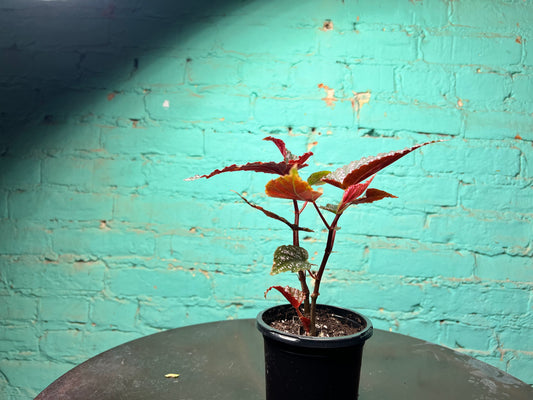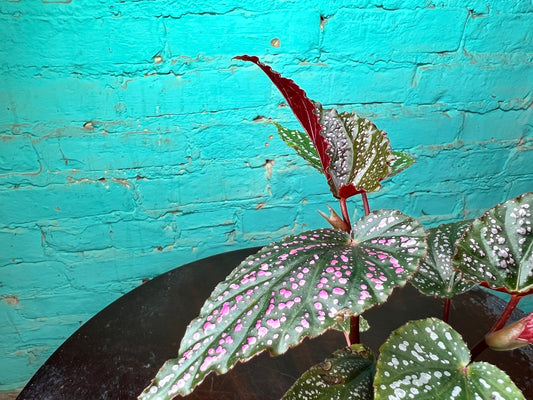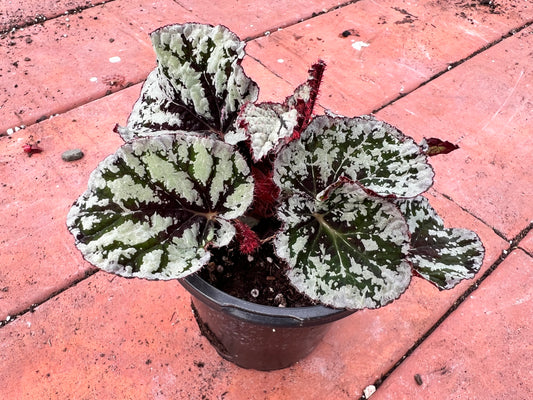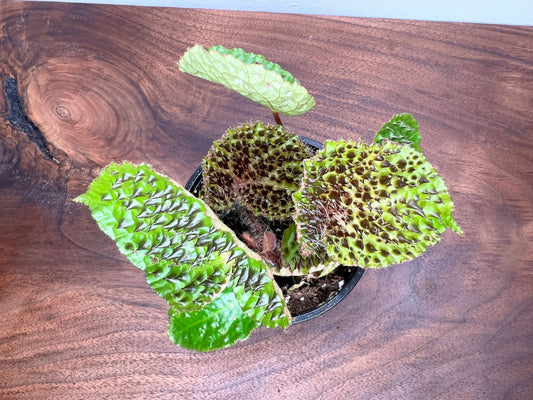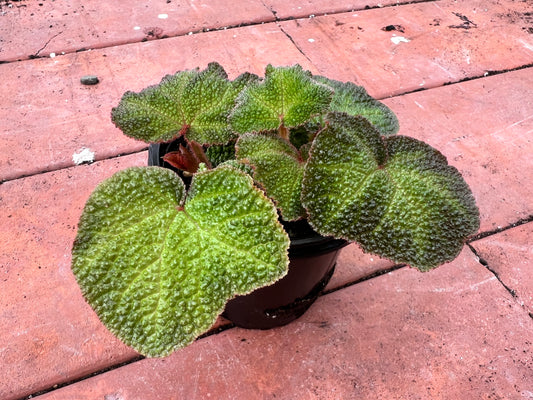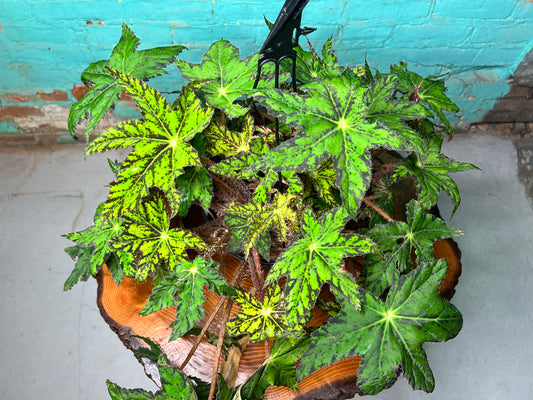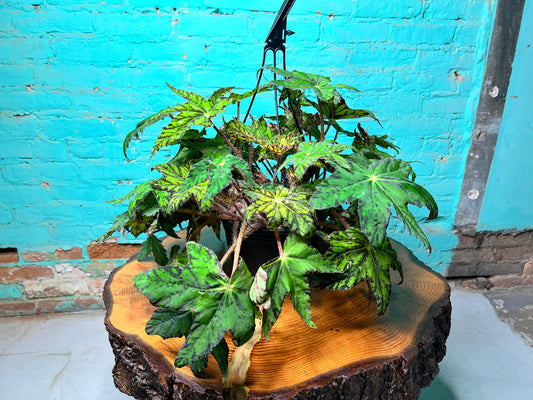Collection: Begonias
Begonias are popular houseplants known for their attractive foliage and vibrant blooms. They come in a wide variety of types, with some suitable for indoor spaces and others thriving outdoors in tropical climates. Here’s a comprehensive guide on caring for begonias, their types, origins, and best tips to keep them thriving:
Begonia Care
-
Light: Begonias generally prefer bright, indirect light. Direct sunlight can scorch their leaves, so it's best to place them in a spot with filtered light, such as near a window with sheer curtains.
-
Watering: Begonias like consistent moisture, but not soggy soil. Water when the top inch of soil feels dry, but ensure the pot has good drainage. Over-watering can lead to root rot, so avoid leaving the plant sitting in excess water.
-
Humidity: Begonias thrive in high humidity. If your home is dry, especially in winter, consider using a humidifier or placing the pot on a shallow tray of pebbles with water to increase moisture around the plant.
-
Temperature: These plants prefer temperatures between 60-75°F (15-24°C). They don’t tolerate cold drafts or sudden temperature changes, so keep them away from windows that might get cold at night.
-
Soil: Use a well-draining, slightly acidic potting mix. A mix formulated for African violets or a general-purpose mix with added perlite or sand for extra drainage works well.
-
Fertilizing: During the growing season (spring and summer), feed your begonia every 2-4 weeks with a balanced, water-soluble fertilizer. Reduce feeding in the fall and winter when the plant's growth slows down.
-
Pruning: To encourage bushier growth, pinch back leggy stems. If your begonia starts to outgrow its pot or becomes too large, you can prune it back to maintain its shape.
-
Repotting: Repot begonias every 1-2 years or when they outgrow their container. Be careful not to disturb the roots too much.
Types of Begonias
-
Begonia Rex (Rex Begonias)
- Origin: Native to India and Southeast Asia.
- Features: Known for their striking, ornamental foliage that comes in a range of colors, from silvery blues to deep reds and purples. Rex begonias are grown primarily for their foliage, although some varieties can bloom.
-
Begonia Semperflorens (Wax Begonias)
- Origin: Native to South America.
- Features: These are compact begonias with waxy, glossy leaves and bright, colorful flowers in red, pink, or white. They're often used in hanging baskets or as bedding plants in warmer climates.
-
Begonia tuberhybrida (Tuberous Begonias)
- Origin: Native to the Andes.
- Features: Known for their large, vibrant flowers in various colors, including yellow, red, pink, and white. Tuberous begonias are typically grown for their beautiful blooms and do well in cooler, shaded spots.
-
Begonia maculata (Polka Dot Begonia)
- Origin: Native to Brazil.
- Features: Characterized by its unique silvery spots on dark green foliage. This plant is highly decorative and can be grown indoors as a houseplant.
-
Begonia Coccinea (Coral Begonias)
- Origin: Native to Central and South America.
- Features: These begonias have bright red or orange flowers and are often used in hanging baskets or as ornamental plants in gardens. They prefer a warm, humid environment.
-
Begonia x hybrid (Hybrid Begonias)
- Origin: Various, created from crossbreeding different begonias.
- Features: These hybrids can feature a wide range of flowers, foliage, and growth habits. They are often more resilient and come in various forms suited for both indoor and outdoor growing.
Best Tips to Keep Your Begonias Thriving
-
Avoid over-watering: Begonias are susceptible to root rot, so let the soil dry slightly between waterings. Use a well-draining potting mix to ensure proper drainage.
-
Maintain humidity: Begonias do best in a humid environment. If humidity is low, use a humidifier or place the plant on a tray of wet pebbles.
-
Rotate your plant: To ensure even growth, rotate your begonia occasionally so all sides receive equal light exposure.
-
Deadhead spent flowers: Removing faded flowers will encourage new blooms and keep the plant looking tidy.
-
Inspect regularly for pests: Keep an eye out for common pests like aphids, mealybugs, or spider mites. If you notice pests, treat the plant with insecticidal soap or neem oil.
-
Repotting and dividing: When repotting, gently divide the roots if they’re overcrowded to give the plant more room to grow.
-
Keep an eye on leaf spots: If you notice brown or yellow spots on the leaves, this could indicate over-watering, low humidity, or fungal infections. Adjust care as needed.
By understanding the specific needs of your begonia variety and providing the right environment, you can enjoy these beautiful plants for years.
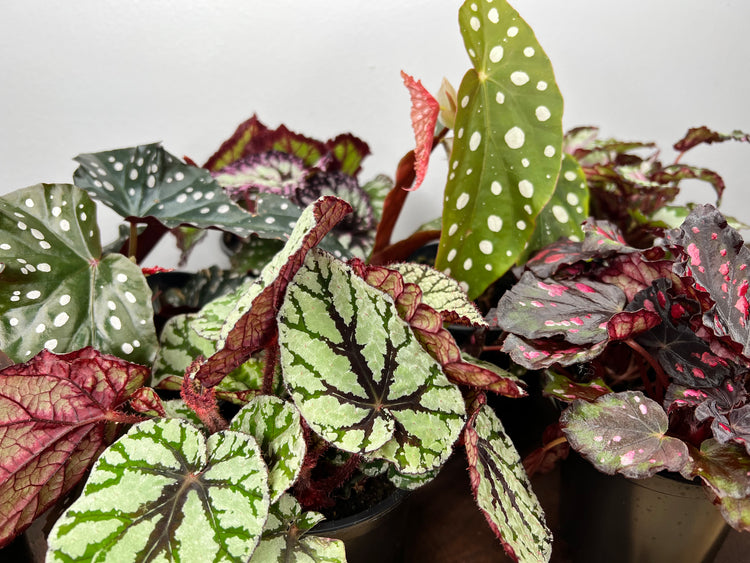
-
Begonia maculata- Polka Dot 4”
Vendor:The Rooted Plant Shop5.0 / 5.0
(5) 5 total reviews
Regular price $18.00 USDRegular priceUnit price / per -
Begonia Fern Leaf
Vendor:The Rooted Plant Shop5.0 / 5.0
(1) 1 total reviews
Regular price $18.00 USDRegular priceUnit price / per -
Begonia Maculata Pink (Polka Dot)
Vendor:The Rooted Plant ShopRegular price $18.00 USDRegular priceUnit price / per -

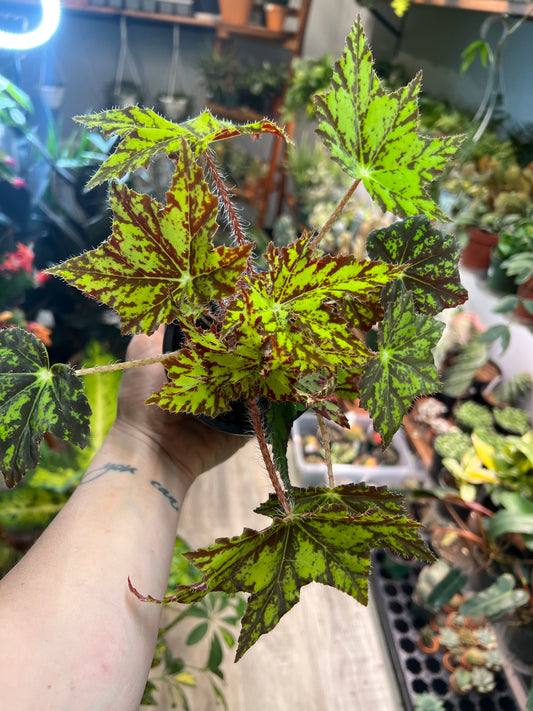 Sold out
Sold outBegonia Geometry 4”
Vendor:The Rooted Plant Shop5.0 / 5.0
(2) 2 total reviews
Regular price $18.00 USDRegular priceUnit price / per -
Begonia 'Pin Stripe’ 4”
Vendor:The Rooted Plant ShopRegular price $18.00 USDRegular priceUnit price / per -
Begonia Ferox
Vendor:The Rooted Plant ShopRegular price $35.00 USDRegular priceUnit price / per -
Begonia Painted Leaf 4”
Vendor:The Rooted Plant ShopRegular price $18.00 USDRegular priceUnit price / per -
Begonia Iron Cross 4”
Vendor:The Rooted Plant ShopRegular price $18.00 USDRegular priceUnit price / per -
Begonia Pegasus Heracleifolia 10” basket
Vendor:The Rooted Plant ShopRegular price $59.00 USDRegular priceUnit price / per -

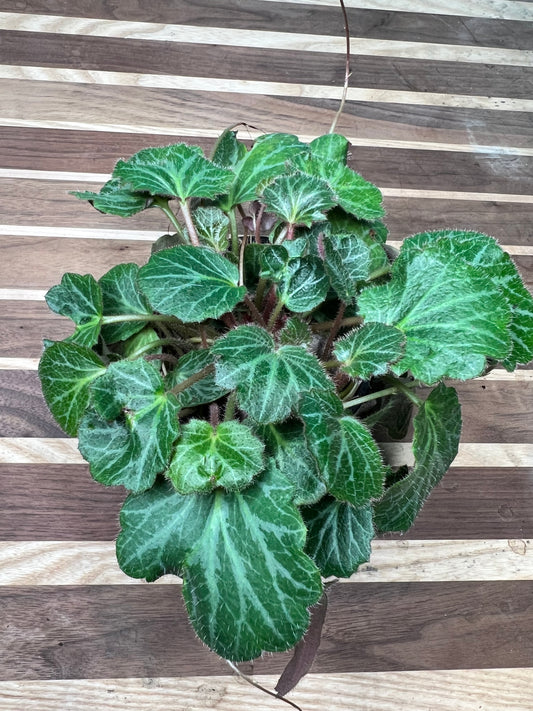 Sold out
Sold outBegonia Strawberry 4”
Vendor:The Rooted Plant ShopRegular price $18.00 USDRegular priceUnit price / per

